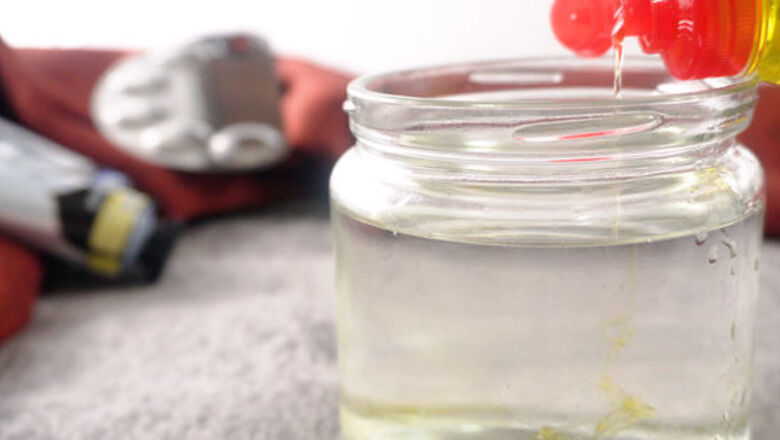
views
Removing Water-Based and Latex Paint
Scrape off any excess paint from the brush. Start by removing as much paint from the brush as you can by scraping it against the rim of the paint can or by using a clean cloth. Try pulling off any clumps or strips of paint from the bristles with your fingers. Don’t damage or fray the brush by scraping it too hard.
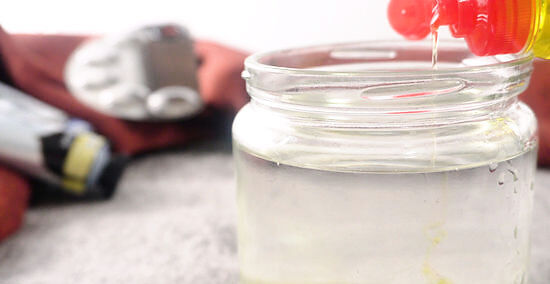
Combine dish soap and warm water in a bucket. Fill a bucket with enough water to cover the bristles of the paintbrush and add a few drops of dish soap. Mix the water around to combine it with the soap and make it nice and sudsy so the soap can penetrate the bristles of the brush. Use warm, not hot water. You don’t want to burn yourself!

Swirl the brush in the soapy water to remove the paint. Work the paintbrush around in the soapy water to get the paint off of the bristles. Use your fingers to separate the bristles and scrape off any clumps or strips of dried paint attached to them.Tip: If the paint is stubbornly sticking to the brush, try soaking the bristles in the soapy water for 30 minutes then swirling it around.
Rinse the brush with clean water. Use a hose or faucet to rinse off the soap from the brush. Work off any remaining flecks of paint by using your fingers while you rinse the brush under the clean water. Separate the bristles with your fingers while you rinse the brush to penetrate deep into the brush and remove any last bits of paint and soap that may be lodged in it.
Use a brush comb or wire brush to scrape off any paint left on the brush. Once you’ve removed the soapy water, use a brush comb or a wire brush to comb out the bristles on the brush. This will put all of the bristles back in line and remove any last little bits of paint stuck on the brush. Don’t scrape the bristles too hard or they could stay bent. Combing the brush also ensures it will dry evenly.

Dry the brush with a cloth or paper towel. Shake the brush to remove the excess water, then blot the brush dry with a clean cloth, paper towel, or newspaper. The brush doesn’t need to be completely dry, but you don’t want to store it while it’s waterlogged or it could damage the bristles. Try not to bend or warp the bristles on the brush when you dry it.
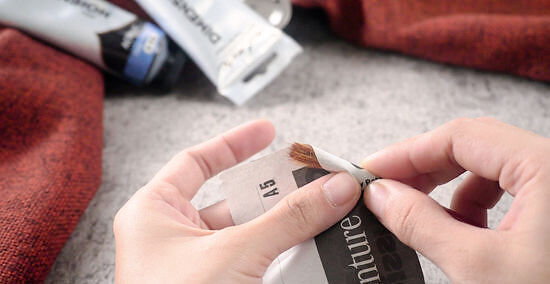
Wrap the brush with newspaper so it keeps its shape. After you’ve cleaned and dried your brush, reshape the bristles with your fingers so they’re even. Then wrap the end of the brush in newspaper so the brush will retain its shape when you store it. Hang or stack the brushes when you store them so the bristles don’t get bent out of shape.
Cleaning Oil-Based Paint
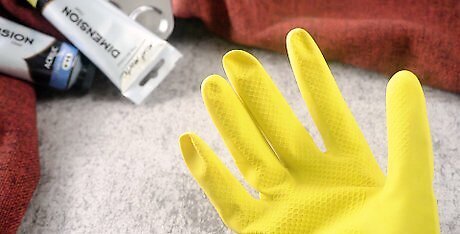
Put on protective equipment and work in a well-ventilated area. Paint thinners can emit toxic fumes and cause chemical burns if it gets on your skin. Wear protective rubber gloves and a face mask to avoid exposing yourself to the chemicals. Work in a well-ventilated area so the fumes don’t build up in the room. Open a window or turn on a fan to increase air circulation in the room. Consider cleaning the brushes outside to reduce the risk of exposure.
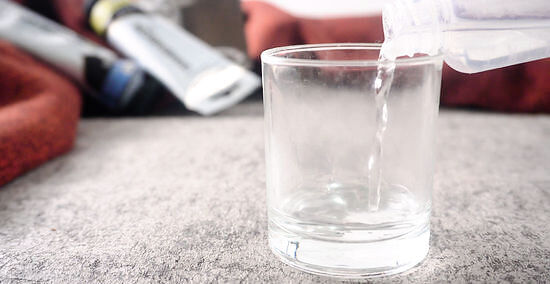
Pour paint thinner into a clean container. Use a clean jar or plastic container and add enough of the paint thinner to cover the bristles of the brush. Be careful not to splash or spill the paint thinner when you pour it. Clean up any paint thinner that you spill immediately.
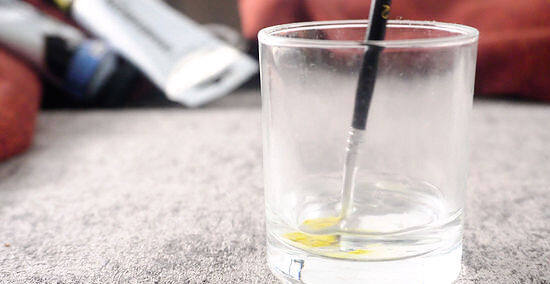
Swirl the brush around in the paint thinner for about 30 seconds. The solvent will quickly start to remove the paint from the brush and you’ll notice that the paint thinner will turn the color of the paint. Gently move the brush around in the paint thinner to strip off the paint. Do not soak the brush for longer than 30 seconds or the solvent will weaken the bristles.
Run a brush comb or wire brush through the bristles. After you’ve swished the brush around in the solvent, take a wire brush or brush comb and gently comb through the bristles of the brush to break up any clumps of paint. Be careful not to bend or strip the bristles from the brush. Run the comb or wire brush through the bristles about 10-15 times.

Fill the container with clean paint thinner and swirl the brush again. Dispose of the dirty paint thinner in the container and refill it with the same amount of clean paint thinner. Dip the end of the brush into the paint thinner and swirl it around to remove any last bits of paint stuck to the brush. Be careful not to soak the bristles for more than 30 seconds or they could become too weak to be used.
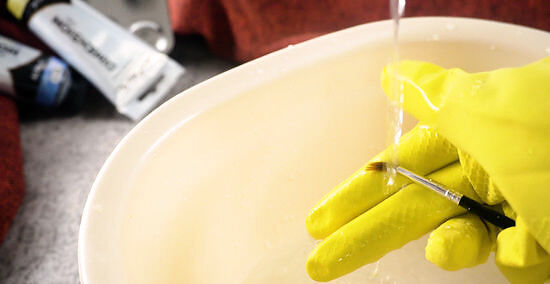
Rinse the brush with clean water. Hold the brush under a faucet or garden hose to rinse off the paint thinner. Use your fingers to gently dislodge or remove any last flecks of paint that may be present on the bristles of the brush.
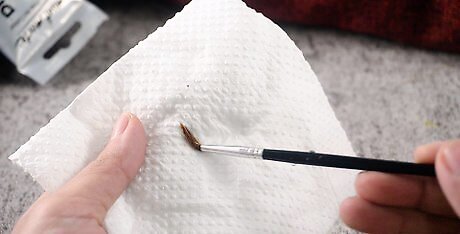
Dry off the brush with paper towels or a rag. Shake off the excess water from the brush then use a paper towel or a clean rag to dab the bristles dry. The brush doesn’t need to be completely dry, but it shouldn’t be sopping wet. Storing a waterlogged brush can cause the bristles to crack. Dab the bristles gently. Don’t bend or warp them when you dry them.
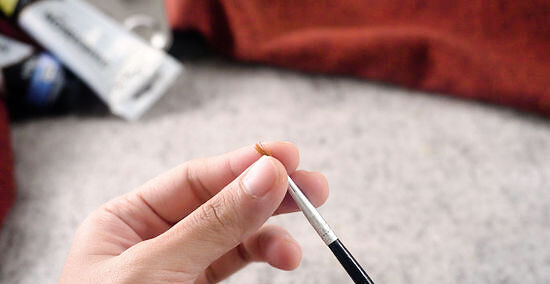
Reshape the bristles of the brush before you store it. Use your fingers to reform the brush and line up the bristles. Stack or hang the brush when you store it so the bristles don’t bend.Tip: If you still have the original packaging that the brush came in, store your paintbrush in it to prolong its lifespan.
Using Vinegar
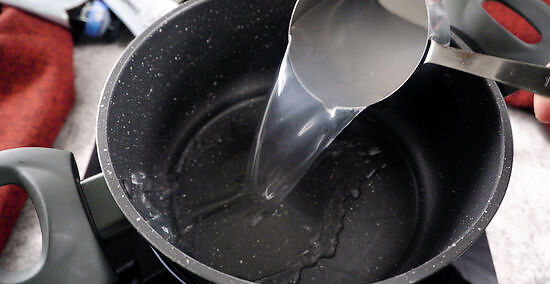
Add 4 cups (950 mL) of vinegar to a pot. Use distilled white vinegar and pour it into a pot. Make sure the pot has enough room to hold the vinegar without any spilling out. You can also use apple cider vinegar if you don’t have white vinegar. Vinegar is great for softening paint that has dried on a paint brush. Use vinegar to loosen oil-based, latex, and water-based paints.
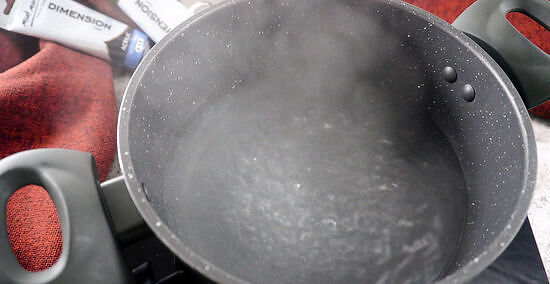
Heat the vinegar to boiling then remove it from the heat. Set the pot on high heat to bring it to a rolling boil. As soon as the vinegar starts to boil, turn off the burner, and remove the pot from the heat source.
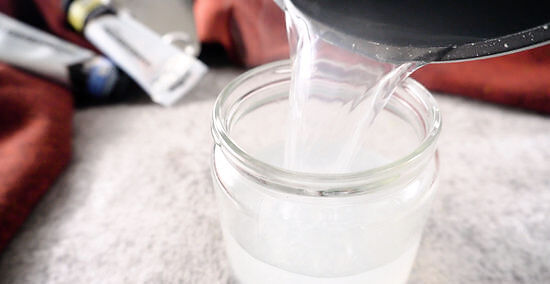
Pour the hot vinegar into a container. Use another pot or a container that can hold the hot vinegar without melting. Be careful not to splash and burn yourself as you slowly pour the hot vinegar into the container. Make sure the container allows you to soak the bristles of the brush. Use a glass jar or a small pot so the brush can fit into it.
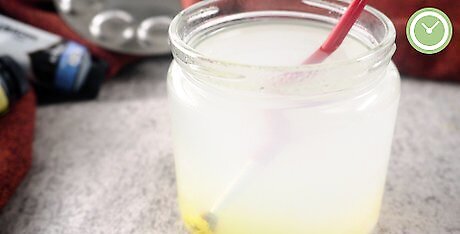
Soak the paintbrush in the vinegar for 20 minutes. Lean the handle against the rim of the container and allow the bristles to rest in the hot vinegar for 10 minutes. If the paint hasn’t softened after 10 minutes, let the brush soak for another 10 minutes to make the paint easier to be removed. Gently swirl the brush around in the vinegar to allow it to penetrate deep into the bristles of the brush.
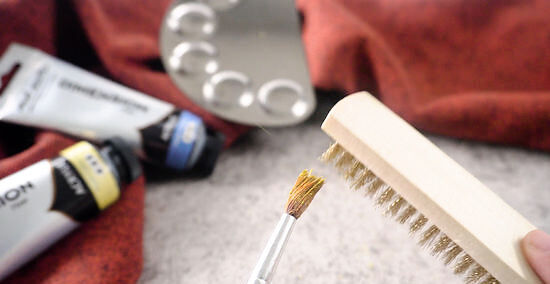
Use a brush comb or wire brush to scrape off the paint. After the brush has soaked and the paint is loosened, take a brush comb or wire brush and gently run it through the bristles of the brush. The paint should come off as you brush. Gently brush about 10-15 times to remove the paint.Tip: If the brush or comb isn’t able to remove the paint, don’t force it by scraping the bristles. Instead, soak the brush in vinegar for another 10 minutes and then try brushing the bristles again.
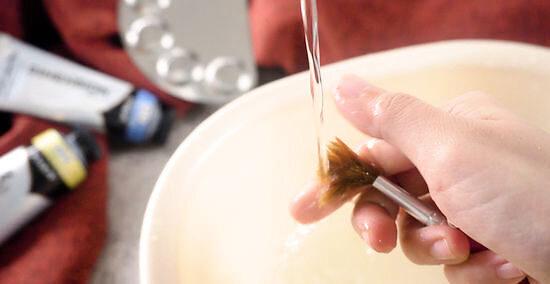
Rinse the brush with clean water. Once you’ve removed the paint from the brush, run the bristles under a faucet or a hose to remove the vinegar. Use your fingers to remove any flecks of paint that may still be lodged in the bristles. Make sure you don’t bend or strip the bristles from the brush while you rinse it.
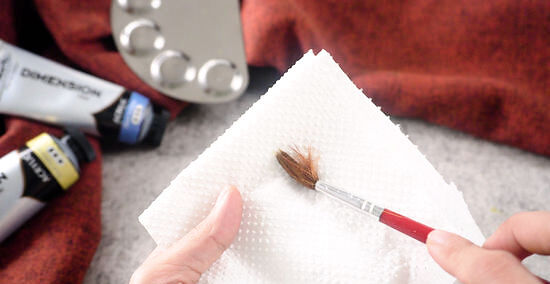
Dry the brush with a clean cloth or paper towels. Give the brush a good shake to remove the excess water, then dab it dry with a rag or paper towel. Don’t wring the bristles or they could lose their shape. Gently dab the bristles to soak up large water droplets so they don’t crack when the brush is stored.
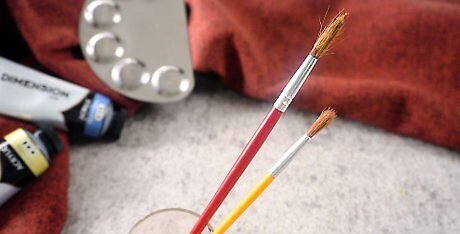
Store the brush by hanging it up or stacking it. To prevent the bristles from bending, store the brush by hanging it on a hook or stacking it. Stuffing a paintbrush into a container or a drawer can warp the bristles and make it ineffective. Wrap the brush in newspaper to help the bristles maintain their shape.




















Comments
0 comment